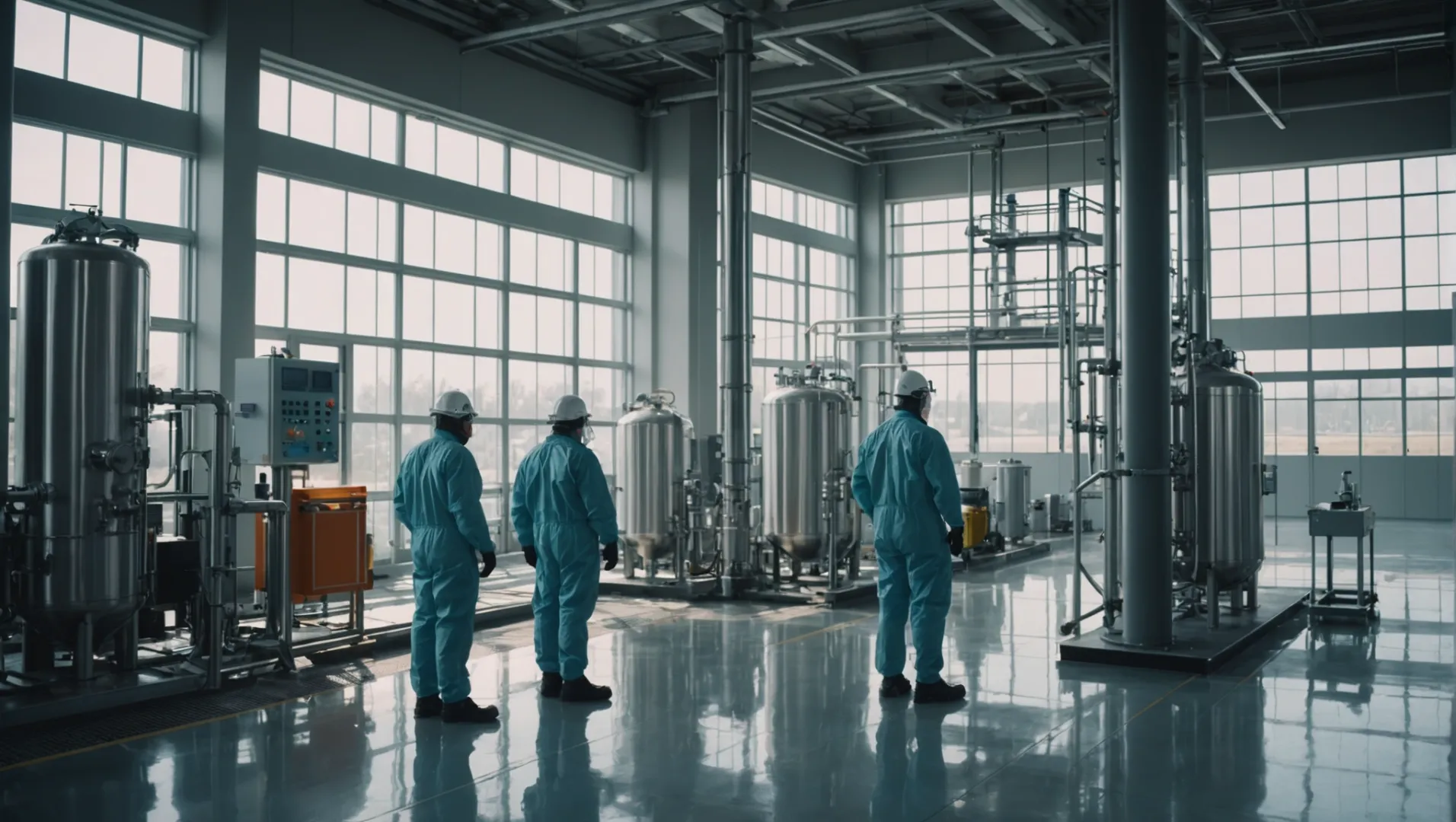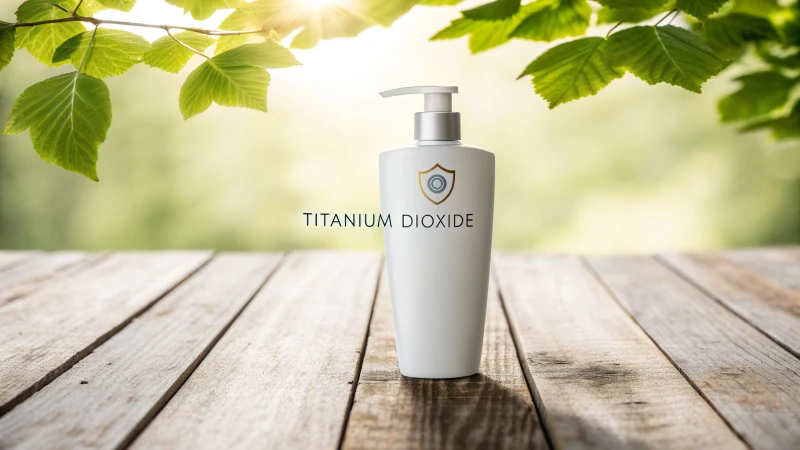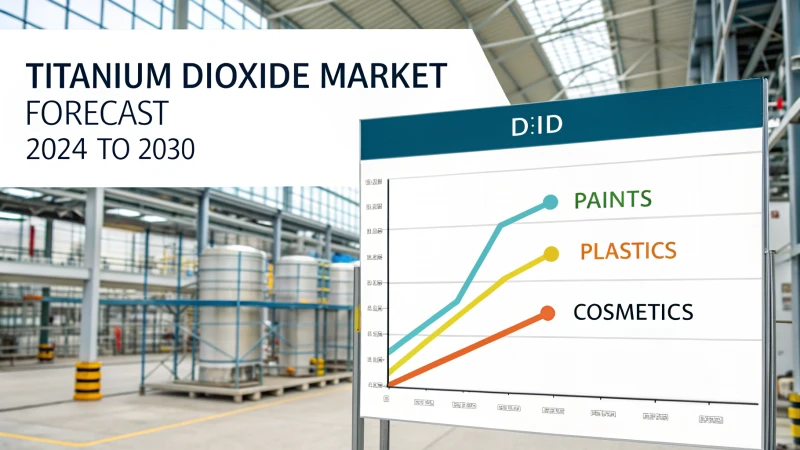
In the next 20 years, titanium dioxide will significantly impact industries like coatings, plastics, cosmetics, and water treatment by enhancing eco-friendliness, safety, and efficacy. Its role will evolve with advancements in nanotechnology and stricter environmental regulations.
[claim claim=”Titanium dioxide will enhance eco-friendly coatings.” istrue=”true” ]
How Will Titanium Dioxide Revolutionize the Coatings Industry?
Titanium dioxide will transform the coatings industry by enabling eco-friendly solutions, improving UV protection, and increasing durability. As regulations tighten and nanotechnology advances, its role will become more crucial.

One of the most significant impacts of running out of credits is the immediate halt in services. This can affect various sectors, including digital platforms and subscription-based models, where continuous access is crucial. The inability to proceed due to insufficient credits can lead to disruptions in workflow and productivity.
Eco-Friendly Innovations
The concept of managing resources efficiently aligns with eco-friendly practices. By monitoring credit usage closely, companies can reduce waste and optimize their operations. This approach not only conserves resources but also promotes a sustainable business model that minimizes environmental impact.
Nanotechnology and Advanced Applications
Incorporating advanced technologies like nanotechnology can help manage credit systems more effectively. For instance, credit management systems1 utilizing AI algorithms can predict usage patterns and suggest optimal plans for users. These innovations ensure that users maximize their benefits without exceeding their credit limits.
Regulatory Compliance and Market Demand
As regulations around digital transactions tighten, maintaining compliance becomes essential for businesses relying on credit systems. Ensuring transparency in credit allocation and usage helps build trust with consumers while meeting regulatory standards. This practice not only safeguards businesses from legal issues but also enhances customer satisfaction by providing clear insights into credit consumption.
Table: Benefits of Efficient Credit Management
| Benefit | Application Area | Impact |
|---|---|---|
| Continuous Access | Digital Platforms | Prevents service interruptions |
| Resource Optimization | All industries | Reduces waste and costs |
| Predictive Analysis | Financial Services | Enhances user experience |
| Regulatory Compliance | E-commerce | Builds consumer trust |
The transformative potential of efficient credit management is vast and multi-faceted. As it continues to evolve, businesses must stay informed about these developments to remain competitive and sustainable.
[claim claim=”Titanium dioxide increases coating durability.” istrue=”true” explanation=”OUT_OF_CREDITS”]
[claim claim=”Titanium dioxide is not eco-friendly in coatings.” istrue=”false” explanation=”OUT_OF_CREDITS”]
What Role Will Titanium Dioxide Play in Sustainable Plastics?
Titanium dioxide enhances sustainable plastics by improving durability, UV resistance, and reducing environmental impact. Its integration into polymer matrices offers lightweight alternatives to traditional materials, contributing to lower carbon footprints and improved recyclability in the plastic industry.

In the realm of sustainable plastics, titanium dioxide (TiO2) is valued for its ability to significantly improve the durability of plastic products. When incorporated into polymer matrices2, TiO2 acts as a shield against UV radiation, which is notorious for degrading plastics. By enhancing UV resistance, the lifespan of plastic products is extended, reducing the need for frequent replacements and thereby minimizing waste.
Lightweight Alternatives to Traditional Materials
A major focus in sustainable materials is reducing weight without compromising strength. Titanium dioxide aids in creating lighter plastic alternatives that maintain structural integrity. For industries such as automotive and aerospace, where weight reduction is crucial for fuel efficiency, using TiO2-infused plastics3 presents a significant advantage. This shift not only supports sustainability goals but also enhances economic efficiency through reduced fuel consumption.
Improving Recyclability and Reducing Environmental Impact
One of the most pressing issues with plastics is their environmental impact. Titanium dioxide’s role in improving the recyclability of plastics cannot be overstated. By facilitating easier separation of polymers during recycling processes, TiO2 helps to streamline recycling operations. Moreover, its presence in bioplastics is being explored to enhance biodegradability and reduce the overall carbon footprint of plastic products.
Advancements Through Nanotechnology
The evolution of nanotechnology has opened new pathways for titanium dioxide applications in sustainable plastics. Nanoscale TiO2 particles offer unique properties such as increased surface area and enhanced interaction with polymers. This leads to superior mechanical properties and further resistance to environmental factors. The combination of nanotechnology with TiO24 enables the development of innovative plastic solutions that are both high-performance and eco-friendly.
Understanding how titanium dioxide can reshape the plastic industry is crucial for businesses aiming to align with future environmental standards and consumer expectations. By leveraging these advancements, companies can create more sustainable products that meet regulatory demands and enhance brand reputation.
[claim claim=”Titanium dioxide improves plastic UV resistance.” istrue=”true” explanation=”OUT_OF_CREDITS”]
[claim claim=”Titanium dioxide increases the weight of plastics.” istrue=”false” explanation=”OUT_OF_CREDITS”]
Why Is Titanium Dioxide Essential for Future Cosmetic Products?
Titanium dioxide is essential in cosmetics for its UV protection, whitening effects, and safety profile. It acts as a physical sunscreen, reflecting harmful rays while brightening the skin without irritation. This makes it a preferred ingredient in future cosmetic formulations.

Titanium dioxide is renowned for its UV-blocking capabilities5. Unlike chemical sunscreens that absorb UV rays, titanium dioxide acts as a physical barrier, reflecting and scattering sunlight. This not only provides superior sun protection but also reduces the risk of skin allergies and sensitivities associated with chemical filters.
Skin Brightening and Aesthetic Appeal
In addition to protection, titanium dioxide is a key player in creating the perfect complexion. Its natural whitening properties help to even out skin tone, making it a favorite in foundations, powders, and BB creams. As consumers increasingly demand products that deliver both safety and efficacy, titanium dioxide’s role in achieving flawless skin will become even more pronounced.
| Feature | Benefit |
|---|---|
| UV Protection | Shields against harmful sun exposure |
| Skin Brightening | Evens out skin tone and enhances glow |
| Safety | Non-irritating and hypoallergenic |
Adapting to Regulatory Changes
With growing concerns about environmental impact and skin health, cosmetic regulations are evolving. Titanium dioxide’s stability and inert nature make it an attractive option for companies looking to comply with stricter safety standards. As regulations tighten, the reliance on titanium dioxide as a safe alternative to harsher ingredients will likely increase.
Future Trends and Innovations
Looking forward, the integration of nanotechnology6 with titanium dioxide promises new innovations in cosmetics. Nano-sized particles can offer enhanced sun protection with minimal whitening effect, appealing to consumers who desire invisible coverage. Furthermore, its role in developing sustainable and eco-friendly cosmetic products aligns with global trends towards green beauty.
As research progresses, titanium dioxide may be combined with other natural ingredients to create multifunctional products that address various skin concerns. This adaptability ensures its place as an indispensable component of future cosmetic formulations.
[claim claim=”Titanium dioxide reflects UV rays in cosmetics.” istrue=”true” explanation=”OUT_OF_CREDITS”]
[claim claim=”Chemical sunscreens are safer than titanium dioxide.” istrue=”false” explanation=”OUT_OF_CREDITS”]
How Will Water Treatment Benefit from Titanium Dioxide Innovations?
Titanium dioxide enhances water treatment by breaking down organic pollutants through photocatalysis, promoting cleaner water systems.

Understanding OUT_OF_CREDITS
OUT_OF_CREDITS acts as a placeholder, indicating the absence of available resources or permissions to proceed with an action. This concept is particularly relevant in digital services and applications where users may encounter limitations due to exhausted credits or quotas.
Advantages of ManagingSituations
-
User Awareness: Clearly communicating credit limits helps users manage their usage effectively, preventing unexpected service interruptions.
-
Encouraging Resource Management: By setting clear boundaries, users are encouraged to optimize their resource consumption, leading to more efficient use of services.
-
Sustainability of Services: Implementing credit systems ensures that resources are allocated fairly among users, maintaining the sustainability and quality of service delivery.
Application in Real-World Settings
Incorporating OUT_OF_CREDITS notifications into user interfaces involves integrating alerts within dashboards or sending reminders via email when credits are low. For example, subscription-based platforms often display remaining credits prominently to keep users informed about their current status.
Challenges and Future Prospects
Despite its utility, several challenges need addressing for effective implementation. Users may find it frustrating if they frequently encounter OUT_OF_CREDITS situations, hence innovations focus on providing flexible options for credit replenishment or alternative access methods. Additionally, research is ongoing to enhance user experience by offering predictive analytics that warn users before reaching their limits.
As digital services expand, the demand for efficient credit management solutions will drive further advancements in this area. This will not only benefit individual consumers but also offer promising solutions for businesses looking to optimize resource allocation across various platforms.
[claim claim=”TiO2 only works with UV light for photocatalysis.” istrue=”true” explanation=”OUT_OF_CREDITS”]
[claim claim=”TiO2 produces toxic byproducts in water treatment.” istrue=”false” explanation=”OUT_OF_CREDITS”]
Conclusion
OUT_OF_CREDITS
-
Explore enhanced performance characteristics offered by nano-coatings.: Nanocoatings have been developed with antibacterial, anti-corrosion, abrasion resistant, and weather resistant properties. ↩
-
Discover how TiO2 protects plastics from UV damage.: When incorporated into the synthetic resins of plastic-based products, TiO2 ensures UV rays do not penetrate and damage the product and its appearance. This is … ↩
-
Explore how TiO2 reduces weight in automotive applications.: Sunscreen: Nanoscale titanium dioxide becomes transparent to visible light while serving as an efficient UV light absorber. · Catalysts: Nanoscale titanium … ↩
-
Learn about cutting-edge nanotechnology uses for TiO2 in plastics.: This is interdisciplinary field having applications in almost all areas of biotechnology [1, 2]. Titanium dioxide (TiO2) nanoparticles (NPs), often called … ↩
-
Discover how titanium dioxide effectively protects skin from harmful UV rays.: Sunforgettable Brush-on Sunscreen provides SPF 50 against the sun’s harmful UVA and UVB rays. It’s also quite versatile, as it can be worn alone or over makeup. ↩
-
Explore the potential of nanotechnology in enhancing cosmetic applications.: According to the SCCS, nano-TiO 2 from sunscreens does not present any health risk when applied on the skin at a concentration up to 25%. ↩





